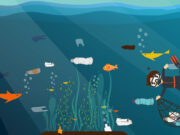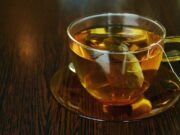As the health of coral reefs continues to decline under the stress of climate change, researchers aim to rejuvenate failing reefs by transplanting healthy coral. Unfortunately, they’ve found mixed results, as some transplanted coral wither and die while others take root and thrive.

Why some transplanted coral, called “outplants,” flourish and others struggle or perish has remained a mystery, until now. A new study led by researchers at the USC Dornsife College of Letters, Arts and Sciences and published in the Proceedings of the National Academy of Sciences reveals the key to successful coral transplantation.
According to a 2021 study, Earth has lost half of its coral reefs since 1950. This global devastation holds tragic potential: A billion people benefit from reef ecosystems, and the U.S. economy alone gains $3.4 billion per year from them through industries like fishing and tourism, according to the National Oceanic and Atmospheric Administration.
When cloned coral and various environments were tested, researchers found that both the coral and the environment mattered. No single clone proved strong across all environments; each site saw a different clone step up and adapt for success.
“This is very important information for reef restoration,” said Kenkel. “It means that the genetic diversity of coral transplants is going to be important for hedging our bets.” As researchers aim to restore reefs, they’ll want to use a variety of individuals to ensure at least one can adapt to the new home.
She likened the idea to investing: “Diversifying your portfolio is safer than betting big on one particular company because even if some companies lose money, others will win.”
Maximizing genetic diversity — rather than looking for one standout coral to save the day, as has been the trend among researchers — is a wiser approach, she said.
Main image: Staghorn coral: Peter & Crystle Clark/DepositPhotos
Further Reading
Proceedings of the National Academy of Sciences 10.1073/pnas.2203925119

















